Abstract
Non-gay-identifying men who have sex with men are at risk for human immunodeficiency virus (HIV) infection. To understand these men and to develop interventions to reduce their HIV risks, the authors interviewed staff at agencies that serve non-gay-identifying men who have sex with men, business people who interact with them, and the men themselves. Interviews were augmented with focus groups of non-gay-identifying men who have sex with men and field observations at sites identified as places where they meet to negotiate or have sex. These qualitative data suggested 73 possible groups, which were consolidated into 16 broader "sectors," and then formally ranked by level of HIV risk, ease of access to the sector, psychosocial risks, and influence of other local interventions or research activities. The authors identified six priority groups of non-gay-identifying men who have sex with men (and sites where members of these groups could be approached): hustlers, closeted men, experimenters, incarcerated or formerly incarcerated men, men of color, and heterosexually identified bisexuals. Masturbation and oral sex were reportedly common, but anal and vaginal sex were also noted; condom use was rarely reported. Risk behaviors among non-gay-identifying men who have sex with men persist for a variety of reasons and may require a variety of intervention approaches.
Full text
PDF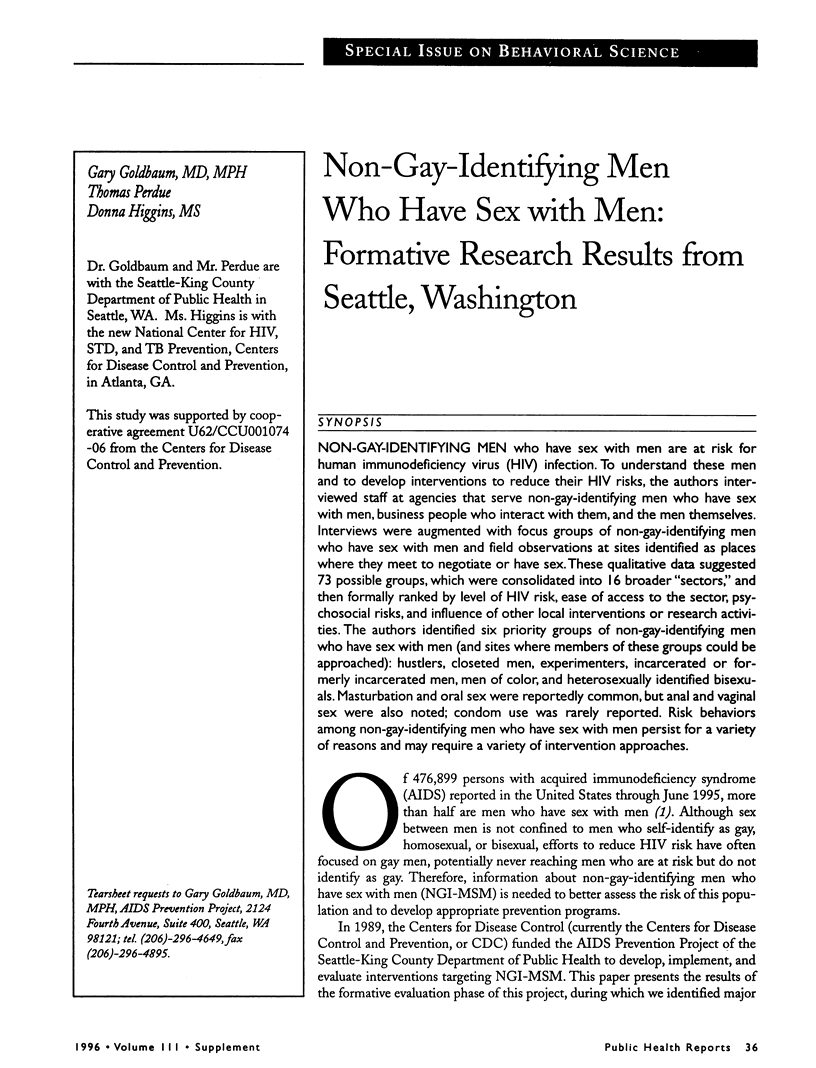
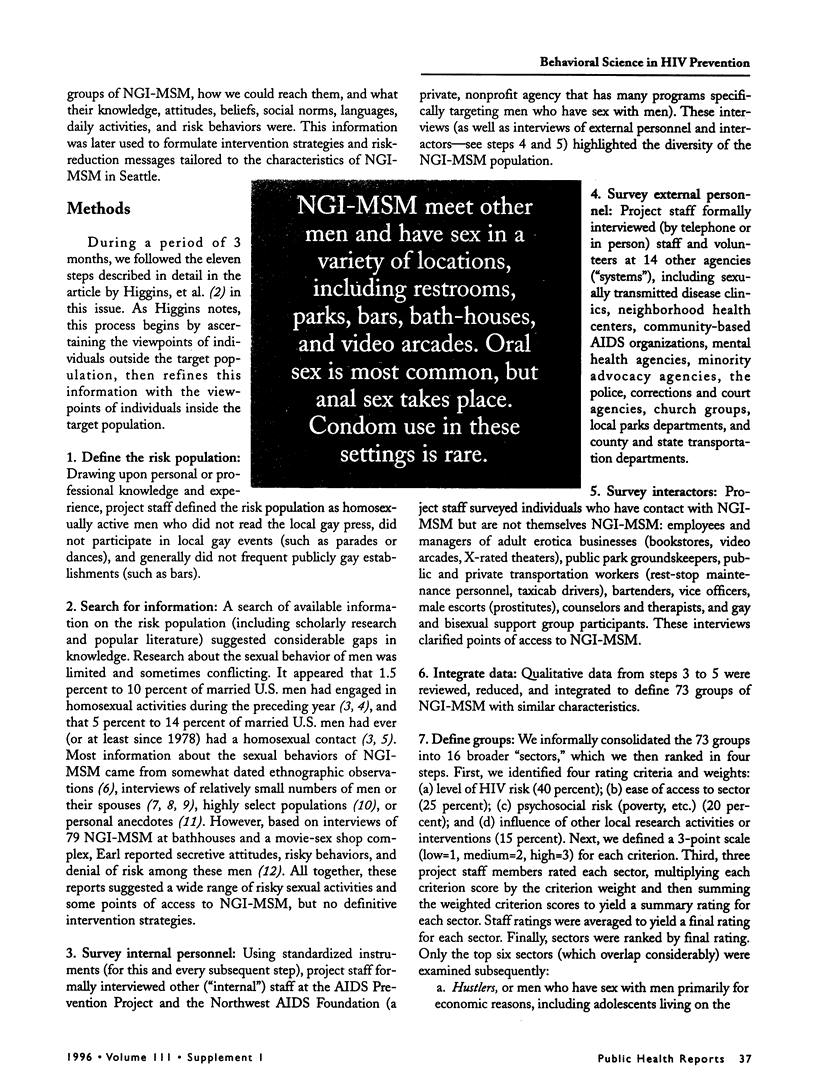
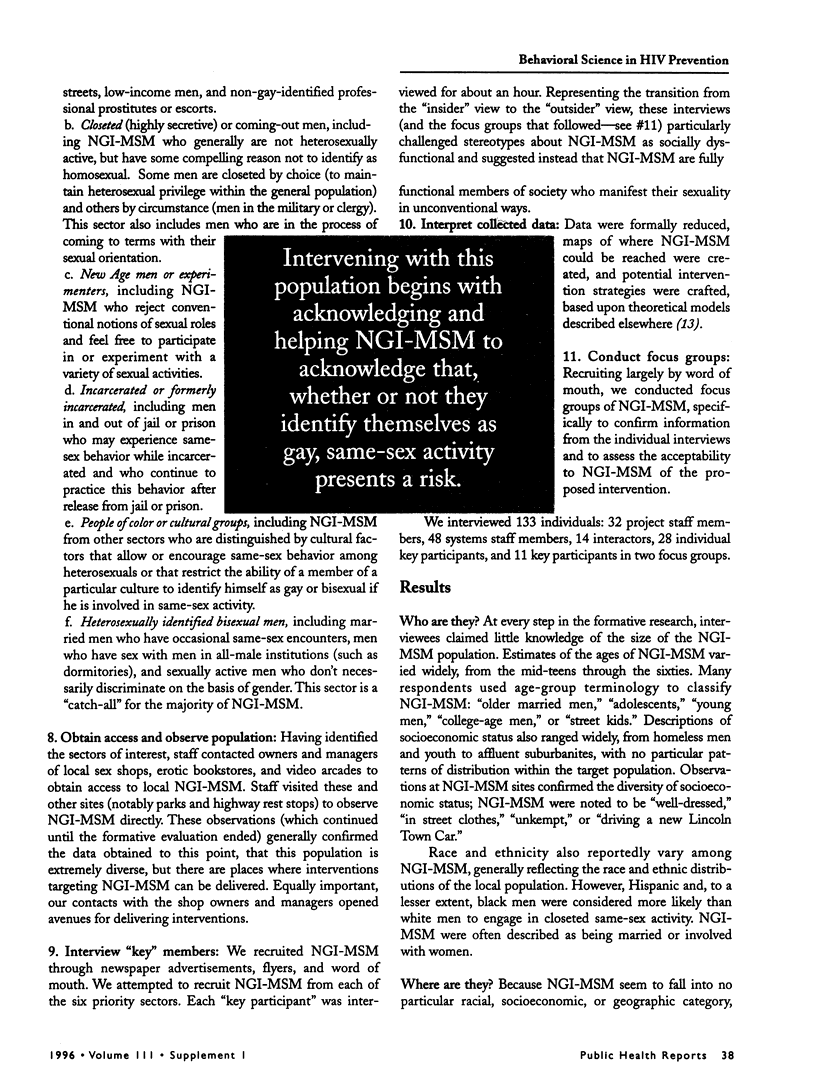
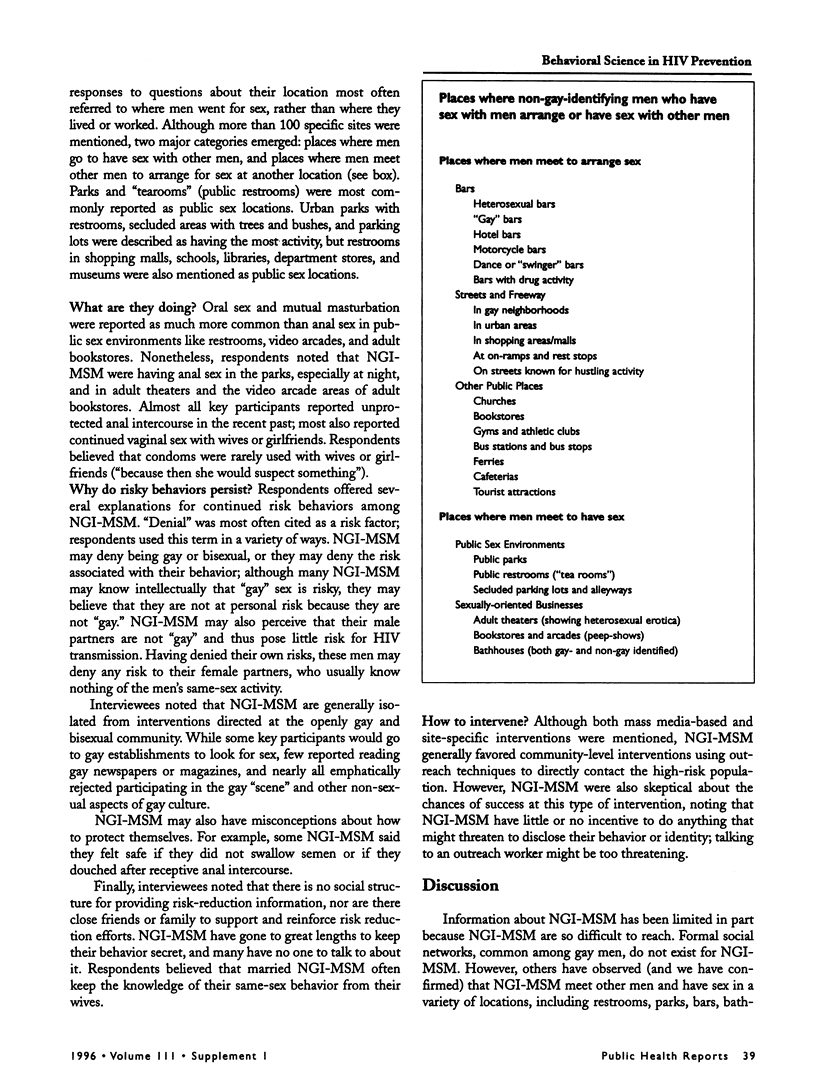
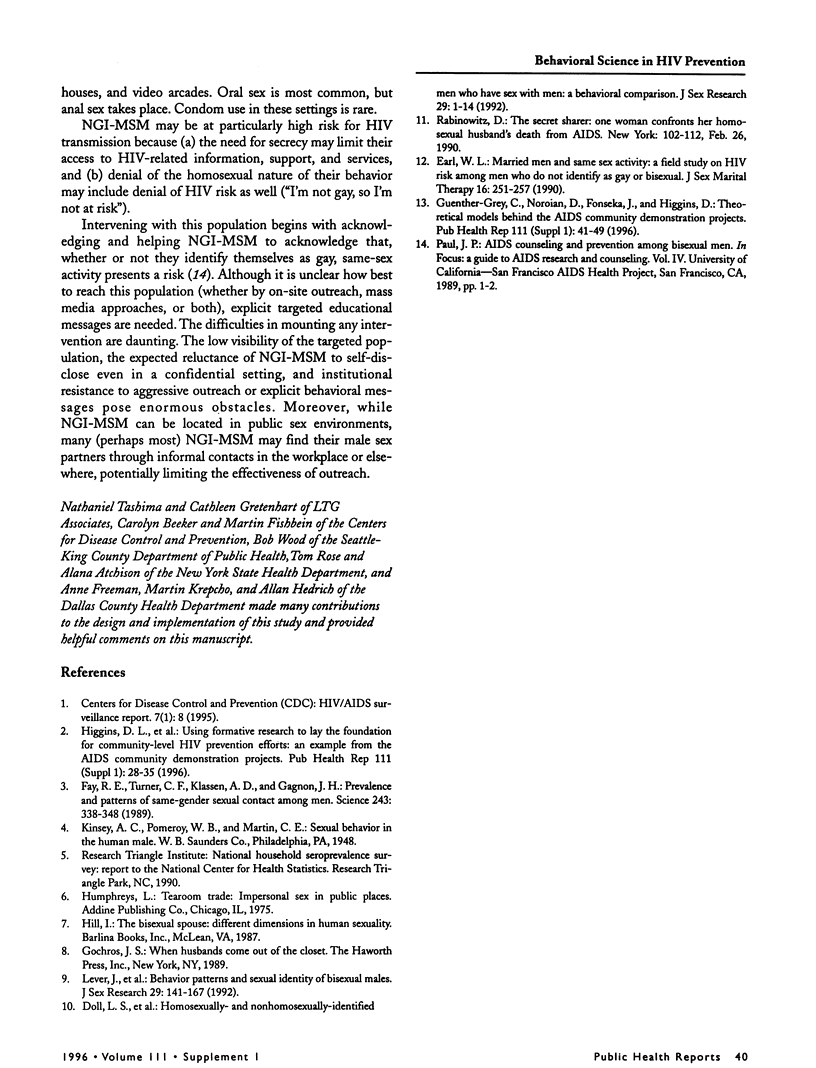
Selected References
These references are in PubMed. This may not be the complete list of references from this article.
- Earl W. L. Married men and same sex activity: a field study on HIV risk among men who do not identify as gay or bisexual. J Sex Marital Ther. 1990 Winter;16(4):251–257. doi: 10.1080/00926239008405461. [DOI] [PubMed] [Google Scholar]
- Fay R. E., Turner C. F., Klassen A. D., Gagnon J. H. Prevalence and patterns of same-gender sexual contact among men. Science. 1989 Jan 20;243(4889):338–348. doi: 10.1126/science.2911744. [DOI] [PubMed] [Google Scholar]
- Guenther-Grey C., Noroian D., Fonseka J., Higgins D. Developing community networks to deliver HIV prevention interventions. Public Health Rep. 1996;111 (Suppl 1):41–49. [PMC free article] [PubMed] [Google Scholar]
- Higgins D. L., O'Reilly K., Tashima N., Crain C., Beeker C., Goldbaum G., Elifson C. S., Galavotti C., Guenther-Grey C. Using formative research to lay the foundation for community level HIV prevention efforts: an example from the AIDS Community Demonstration Projects. Public Health Rep. 1996;111 (Suppl 1):28–35. [PMC free article] [PubMed] [Google Scholar]


